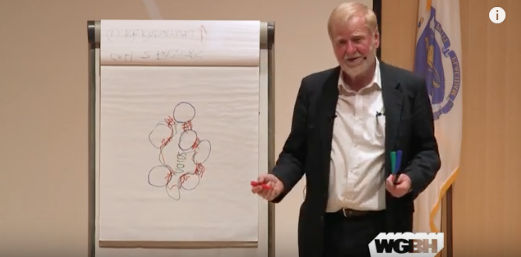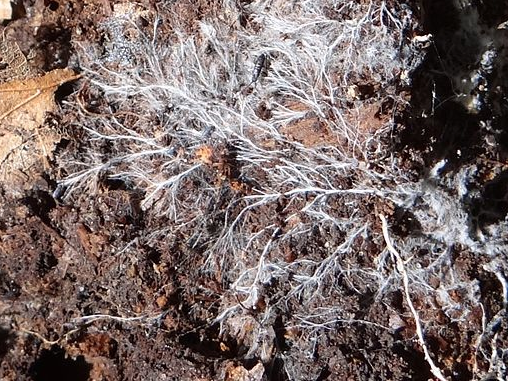This article was originally published on EFTE-Applied Research and Education
“Imagine a conference not on the Future of the Humanities in the Capitalist Restructuring University, but instead on the Power of the Humusities for a Habitable Multispecies Muddle! …human beings are with and of the earth, and the biotic and abiotic powers of this earth are the main story. However, the doings of the situated, actual human beings matter. It matters which ways of living and dying we cast our lot rather than others. It matters not just to human beings, but also to those many critters across taxa which and whom we have subjected to exterminations, extinctions, genocides, and prospects of futurelessness.”
Donna J. Haraway, Staying with the Trouble: Making Kin in the Chthulucene
Much of our soil is becoming mere dirt. And if you care about climate change, you need to care about the crucial role that land degradation is playing in global warming, and the crucial role that soil restoration will and does already play in creating real climate solutions.
Healthy soil teems with life beneath our feet. Being land-dwellers, we tend to focus on what’s aboveground. When we observe plants, we’re typically only seeing 30 percent of the overall biomass of that plant! Besides root structures, all sorts of bacteria, organisms, and detritus interact in complex ways in soil. Within a cubic meter of healthy earth, you may find fungal hyphae twice the diameter of the earth! For those who do not know, hyphae are thread-like tubular structures, a mass of which make up the mycelium, which is the true body of a fungus. Hyphae digest externally (by releasing chemicals and enzymes into soil and nearby plant tissues) and form connections that transfer nutrients into itself as well as the nearby plants. The complex subterranean world was designed by nature intelligently; our interference in its wellbeing has had devastating fallout including desertification and global warming.
The number one culprit in degrading and eroding soil is big agriculture. Practices like tilling, no use of cover crops, and heavy use of fertilizers and pesticides all strip nutrients and microbes and destroy what Walter Jehne, Australian climate scientist and soil microbiologist, calls the “soil sponge,” full of fungal hyphae helping to create a porous living material that can sequester carbon. Sue Van Hook, mycologist, naturalist, teacher and healer, explains in this interview with Mushroom Revival that carbon is like the skeleton of the sponge and can hold up to 8x its weight in water. This massively increases the longevity of soil and the ability to continue growing in times of drought. Spores from fungi that grow in soil also trap water vapor, and Walter Jehne notes in this excellent interview how water vapor plays a key role in hydrology and the cooling of the planet.

He further explains that, “For the last 8,000 years of ‘human civilization,’ we’ve been very effective at clearing and burning [productive] land, cultivating those soils and building industrial systems. We’ve oxidized the carbon and destroyed the biological cycles that underpin the health of those landscapes. We’ve done that with 5 billion hectares of land, turning 40 percent of the Earth’s land surface into desert and wasteland. As we oxidize the carbon, by definition, those soils can’t infiltrate, retain, or make available water from rain. Invariably, they go to desert. That’s been the history of man on this planet.”
In brief, sequestering carbon in soil has the potential to reverse climate change by firstly drawing down the oxidized atmospheric carbon into the ground where it is stable and beneficial, and by rebalancing the water cycles of planet earth.
OK— so how does humus play into this?
You may be thinking it has something to do with compost? Topsoil? Organic matter? Well, sort of. Let’s start with organic matter. When it decomposes, all kinds of molecules are broken down (protein, sugars, amino acids, etc.) by bacteria/fungi/other organisms in the soil. Eventually usable stuff that’s been broken down as much as is possible is available to plants. Then there’s leftover molecules largely made up of carbon, and this absorbent material that we’ve historically called “humus” is very stable and can persist in soil for hundreds of years.
Humus is hard to define. In fact, Erhard Jennig writes that “humus is not a real substance, but rather a process.” The seemingly simple and common definition of humus as “black-brown matter in the topsoil produced by the putrefaction of vegetable and animal matter” does not capture the complexity of formation processes that take place following decomposition processes, which includes binding together with inorganic compounds like fine clay particles. More recent research into soil microbiology by Jehne reveals that “humus” may have more to do with what is secreted by plant roots than we previously realized.
We can agree that compost is good, and adding organic matter especially to areas in which you frequently harvest seems especially good. But Jehne says that most soil carbon comes from plants’ root exudates. “Nature created soil by growing plants and making sure that potentially up to 60 or 70 percent of the biomass produced can be fixed into stable soil carbon. Currently though, little of it is.” Importantly, fungi are the necessary agents that mediate conversion of these root exudates into humates or glomalin (stable soil carbon). Glomalin is produced from leftover chitin from cell walls of fungi and acts like a glue or bedsprings within our soil sponge.
These facts illuminate why common agricultural practices that rely on constant soil disturbance through clearing and harvesting end up making the humus process nearly impossible. The humus process generally requires undisturbed land, which is why you’ll find the richest stores of that authentic black topsoil in untouched forests. We need to revise what “commonplace” growing practices are these days—let’s choose practices that support the humus process and the formation of a strong soil sponge that sequesters carbon, retains moisture, and creates nutrient-rich food for everyone.

What You Can Do
Every bit of carbon that we can re-sequester into soil matters. In reality, restoring the human-humus relationship—restoring our “soil sponge” and recognizing the sacredness of living soil itself— is much more about land management practice than adding awesome compost or other soil amendments.
Van Hook and Jehne note or imply the following basic land management tasks that will restore the soil sponge. Many of these are obviously applicable to farm management, but they can also be adapted for personal backyard growing practices.
- Don’t till! Tilling breaks up important fungal hyphae, disturbs other processes, exposes soil to radiation, and oxidizes carbon.
- Use cover crops and groundcover. Keeping soil covered at all times with plants reduces carbon dioxide off-gassing, provides food and relationships for beneficial fungi, attracts biodiversity and potential pollinators, increases fertility and aeration, and decreases the likelihood of heat domes and runoff.
- Diversify crops. Mixed species provide better benefits for everyone below ground as well as aboveground.
- Implement appropriate grazing practices, especially in grasslands. Think of grazing animals as “mobile biodigesters” (term coined by Jehne) who help return unharvested vegetation to the earth rather than having it burn. The hooves of these herbivores also break up soil, they help spread seeds, and waste adds fertility. Appropriate grazing means livestock are moved regularly so nothing is overeaten. Atmospheric science has shown that herbivore-maintained grasslands produce an abundance of the kinds of ions needed to break up methane ions, another harmful greenhouse gas.
- Oppose fracking however you can—the methane exposed from that far outweighs any methane from other sources.
- Stop using biocides, which whether organic or not, kill life outright in our soils.
- Plant crops with deep roots like bluestem prairie grass, which pump carbon downwards into the soil.
- Support regrowth of forests—including urban forests—however you can.
- Aim to create perennial gardens and food forests rather than gardens full of annual plants.

As it goes in this “multispecies muddle,” our human health is directly tied to soil health. Nutrient density depends on fungi converting organic matter into available minerals, and nutrient density and quality of food grown (possibly even the presence of beneficial microbes) affects our gut health. And as we now know, many illnesses can be tied to gut imbalance. Oh, and not to mention the obvious hard truth: loss of productive soil ultimately leads to not only less nutritious food but less food period…many civilizations “plowed themselves out of business,” so to speak. But of course, we only need to worry about food security if we can first secure the habitability of this planet (i.e. mitigating climate change): habitability not only for us humans, but for all our critter friends whose homes and lives are intertwined with our own.
I hope that alongside the abovementioned practices, more humans will feel an inner perspective and awareness shift. The ground beneath our feet is incredibly complex, intelligent, responsive, and alive. We have historically demanded of the ground so much, dominating it with our shovels and machines and flames. What will happen when we recognize that which we stand upon and that which feeds us as sacred and sentient? What if, along with our revision of physical actions and care-taking, we infuse our everyday awareness with deeper sensing and gratitude for the cycles of the underworld?
For visual/auditory learners interested in hearing more details from Walter Jehne and his feasible solutions for literally saving the world, check out this full lecture video.
A shorter visual illustration of the soil sponge can be found here.